|
Books Should Be Free Loyal Books Free Public Domain Audiobooks & eBook Downloads |
|
|
Books Should Be Free Loyal Books Free Public Domain Audiobooks & eBook Downloads |
|
Top Authors |
|---|
|
Book type:
Sort by:
|
By: Daniel A. Lord (1888-1955) | |
|---|---|
 Clouds Cover the Campus
Clouds Cover the Campus
On an American college campus, in the early years of World War II, a professor from Germany is murdered and the plans for a new bomb sight he had invented are missing. Who murdered the professor and stole the plans? And are the accidents, happening with alarming frequency to young student aviators from the campus, really accidents -- or is some unknown conspiracy afoot?This mystery novel was written by Daniel A Lord, S.J., a priest and popular American Catholic writer. The subjects of the works in his bibliography range from religion, humor, plays, songs, mysteries and even politics. His most influential work was possibly in drafting the 1930 Production Code for motion pictures. ( | |
By: Daniel Defoe (1659-1731) | |
|---|---|
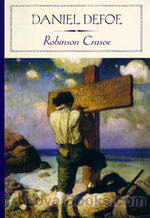 Robinson Crusoe
Robinson Crusoe
Robinson Crusoe is perhaps the most famous castaway of all time. Whilst many of us have not read Defoe’s iconic book, Robinson Crusoe is a character that is familiar to us all. Aided by the hundreds of movies and theatre productions that the book spurned, Crusoe is a household name. Credited with being the first "real fiction" book, this fictional autobiography tells the tale of a young man who found himself shipwrecked on a remote island for 28 years. The story is said to be based on the dramatic life of Alexander Selkirk, a Scottish castaway who lived alone for four years on a Pacific island... | |
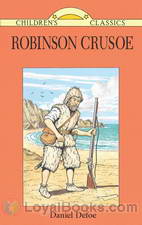 Robinson Crusoe Written Anew for Children
Robinson Crusoe Written Anew for Children
First published in 1719, Robinson Crusoe is a book that marks the beginning of realistic fiction writing in English. Its simple, linear narrative style and the semblance of being a true account and autobiographical in nature led to its great popularity when it first came out. Its original title The Life and Strange Surprising Adventures of Robinson Crusoe of York: Mariner, Who Lived Eight and Twenty Years all alone in an Uninhabited Island on the Coast of America, Near the Mouth of the Great... | |
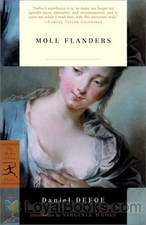 The Fortunes and Misfortunes of the Famous Moll Flanders
The Fortunes and Misfortunes of the Famous Moll Flanders
A woman in prison awaiting a death sentence is given a reprieve because she is pregnant. She migrates to America abandoning the baby to the care of a foster mother. The child, a girl, grows up and begins working as a servant in a wealthy household. Here she is pursued by the two sons of the house and ultimately marries the younger one. When he dies, leaving her with two young children to look after, she begins a life of deception and confidence trickery which ends in great tragedy and disgrace. In her old age, events take a less tragic turn and her redemption comes from sources she least expects... | |
 The History of the Plague in London
The History of the Plague in London
The History of the Plague in London is a historical novel offering an account of the dismal events caused by the Great Plague, which mercilessly struck the city of London in 1665. First published in 1722, the novel illustrates the social disorder triggered by the outbreak, while focusing on human suffering and the mere devastation occupying London at the time. Defoe opens his book with the introduction of his fictional character H.F., a middle-class man who decides to wait out the destruction of the plague instead of fleeing to safety, and is presented only by his initials throughout the novel... | |
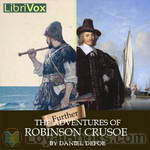 The Further Adventures of Robinson Crusoe
The Further Adventures of Robinson Crusoe
“THE FARTHER ADVENTURES OF ROBINSON CRUSOE; Being the Second and Last Part OF HIS LIFE, And of the Strange Surprizing Accounts of his Travels Round three Parts of the Globe.” After the death of his wife, Robinson Crusoe is overcome by the old wanderlust, and sets out with his faithful companion Friday to see his island once again. Thus begins a journey which will last ten years and nine months, in which Crusoe travels over the world, along the way facing dangers and discoveries in Madagascar, China, and Siberia. | |
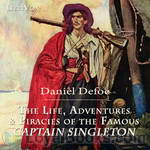 The Life, Adventures & Piracies of Captain Singleton
The Life, Adventures & Piracies of Captain Singleton
The Life, Adventures & Piracies of the Famous Captain Singleton is a "bipartite adventure story whose first half covers a traversal of Africa, and whose second half taps into the contemporary fascination with piracy. It has been commended for its depiction of the homosexual relationship between the eponymous hero and his religious mentor, the Quaker, William Walters.". | |
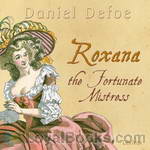 Roxana: The Fortunate Mistress
Roxana: The Fortunate Mistress
The full title of the novel is Roxana: The Fortunate Mistress Or, a History of the Life and Vast Variety of Fortunes of Mademoiselle de Beleau, Afterwards Called the Countess de Wintselsheim. The novel concerns the story of an unnamed "fallen woman", the second time Defoe created such a character (the first was a similar female character in Moll Flanders). In Roxana, a woman who takes on various pseudonyms, including "Roxana," describes her fall from wealth thanks to abandonment by a "fool" of a husband and movement into prostitution upon his abandonment. Roxana moves up and down through the social spectrum several times. | |
 Storm
Storm
The Storm (1704) holds a special place in the writings of Daniel Defoe. Widely considered a founding document of modern journalism, The Storm narrates the calamitous events of November 1703 that are framed by the author in the first four chapters. These are followed by verbatim eyewitness accounts, solicited from survivors through a newspaper advertisement that Defoe placed shortly after the hurricane struck. Defoe is primarily known for his later fiction, loosely based on historical calamities, such as his Journal of the Plague Year (1722), and by fictionalized novels purporting to be first-person accounts, including Robinson Crusoe (1719) and Moll Flanders (1722)... | |
 Robinson Crusoe in Words of One Syllable (Version 2)
Robinson Crusoe in Words of One Syllable (Version 2)
This book is a fictional autobiography of the title character — a castaway who spends 28 years on a remote tropical island near Trinidad, encountering cannibals, captives, and mutineers before being rescued. You know the story; but do you know the story told in words of one syllable? Here Lucy Aikin under the pen name of Mary Godolphin retells Daniel Defoe's famous tale of danger and solitude and resourcefulness. Because of the simpler words, this might be a good book for listeners where English is not their first language. By Lucy Aikin and Daniel Defoe. | |
By: Daniel G. Brinton (1837-1899) | |
|---|---|
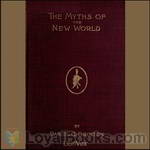 The Myths of the New World
The Myths of the New World
The Myths of the New World's full title describes it as.. " a treatise on the Symbolism and Mythology of the Red Race of America", an attempt to analyse and correlate scientifically, the mythology of the American Indians. Note: Brinton advocated theories of scientific racism that were pervasive at that time. | |
By: Danske Dandridge (1854-1914) | |
|---|---|
 Rose Brake
Rose Brake
Danske Dandridge was a Danish-born American poet, who is considered one of the major poets from West Virginia. In this volume, 36 of her poems are collected. The poems often read a lot like small fairy tales, and speak of nature, spirits, and emotions. - Summary by Carolin | |
By: Dante Alighieri (1265-1321) | |
|---|---|
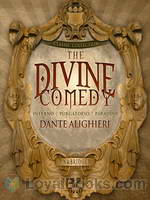 The Divine Comedy
The Divine Comedy
The Divine Comedy (Italian: Commedia, later christened “Divina” by Giovanni Boccaccio), written by Dante Alighieri between 1308 and his death in 1321, is widely considered the central epic poem of Italian literature, the last great work of literature of the Middle Ages and the first great work of the Renaissance. A culmination of the medieval world-view of the afterlife, it establishes the Tuscan dialect in which it is written as the Italian standard, and is seen as one of the greatest works of world literature... | |
 New Life (La vita nuova)
New Life (La vita nuova)
One of Dante's earliest works, La vita nuova or La vita nova (The New Life) is in a prosimetrum style, a combination of prose and verse, and tells the story of his youthful love for Beatrice. The prose creates the illusion of narrative continuity between the poems; it is Dante's way of reconstructing himself and his art in terms of his evolving sense of the limitations of courtly love (the system of ritualized love and art that Dante and his poet-friends inherited from the Provençal poets, the Sicilian poets of the court of Frederick II, and the Tuscan poets before them)... | |
 Convivio
Convivio
Convivio (The Banquet) is a work written by Dante Alighieri roughly between 1304 and 1307. This unfinished work of Dante consists of four trattati, or "books": a prefatory one, plus three books that each include a canzone (long lyrical poem) and a prose allegorical interpretation or commentary of the poem that goes off in multiple thematic directions. The Convivio is a kind of vernacular encyclopedia of the knowledge of Dante's time; it touches on many areas of learning, not only philosophy but also politics, linguistics, science, and history... | |
 Monarchia
Monarchia
The De Monarchia is one of the main works by Dante Alighieri. It is a treatise on secular and religious power, and more specifically on the relationship between secular authority (represented by the Holy Roman Emperor) and religious authority (represented by the Pope). The work is composed of three books, in which Dante condemns the theocratic conception of the power elaborated by the Roman Church and defends that both the Pope and the Emperor derive their power from God, and, that being so, God gave to each power in one certain area of life, which means they should not interfere with each other's power and one should not be considered above the other. | |
 Epistolae, the letters of Dante
Epistolae, the letters of Dante
This volume contains the thirteen letters of the poet Dante Alighieri translated from their original Latin, including the famous and controversial letter to his patron Cangrande della Scala. The letters provide a good deal of context for the reader of Dante regarding his political and philosophical positions. In the final letter, the authenticity of which has been hotly contested by scholars, the author dedicates the Paradiso to the Veronese Cangrande, explains his Divine Comedy's title (then just Comedy), and discusses much of the work's content. | |
 Vulgari Eloquentia
Vulgari Eloquentia
De vulgari eloquentia (On Eloquence in the vernacular) is a short essay written by Dante Alighieri in Latin. The work remains incomplete; only one and a half books are extant. It is believed to have been composed during Dante's exile, probably at some point between 1302 and 1305. The work revolves around the relationship between Latin and vernacular, and the need for a literary language, with an excourse on the poetic forms in vernacular. | |
 Canzoniere
Canzoniere
Le Rime (in English, The Rhymes) are the collection of lyric poems written by Dante Alighieri throughout his life. While the rest of Dante's works were prepared by himself for publication, these poems were written by him in letters, as parts of other works or independently, but only collected and ordered much later, by modern critics. Among these is found the famous collection of Rime Petrose, a cycle of poems dedicated to a woman nicknamed Pietra (Stone) due to her insensibility to the poet's love. As the work of a whole life, the poems are varied, and mirror the many different moments of Dante's thoughts, both poetically and philosophically. | |
 Divine Comedy (version 2 Dramatic Reading)
Divine Comedy (version 2 Dramatic Reading)
The Divine Comedy (in Italian, Divina Commedia, or just La commedia or Comedia) is an epic poem written by Dante Alighieri in the first decades of the 14th Century, during his exile from his native Florence. Considered the most important work of Italian literature, the poem has also has enormous historical influence on western literature and culture more generally. Dante represents the three realms of the afterlife in his three canticles (Inferno--Hell; Purgatorio--Purgatory; Paradiso--Paradise) in a way that reflects and, at the same time, goes beyond Christian tradition of the 14th Century... | |
By: Darby Bible | |
|---|---|
 Bible (DBY) NT 08: 2 Corinthians
Bible (DBY) NT 08: 2 Corinthians
The Darby Bible consists of a translation of the New Testament by John Nelson Darby, originally published in 1867, and a translation of the Old Testament, included in later editions of the text, completed by Darby's students after his death. - Summary by Aaron Hultstrand | |
 Bible (DBY) NT 09: Galatians
Bible (DBY) NT 09: Galatians
The Darby Bible consists of a translation of the New Testament by John Nelson Darby, originally published in 1867, and a translation of the Old Testament, included in later editions of the text, completed by Darby's students after his death. - Summary by Aaron Hultstrand | |
 Bible (DBY) NT 11: Philippians
Bible (DBY) NT 11: Philippians
The Darby Bible consists of a translation of the New Testament by John Nelson Darby, originally published in 1867, and a translation of the Old Testament, included in later editions of the text, completed by Darby's students after his death. The text for this recording comes from the second edition of the Darby Bible. - Summary by Aaron Hultstrand | |
By: Dashiell Hammett (1894-1961) | |
|---|---|
 Five Continental Op Stories
Five Continental Op Stories
Before Sam Spade chased the black bird in The Maltese Falcon and Nick and Nora Charles stirred their first martinis in The Thin Man, the Continental Op walked early twentieth century San Francisco’s mean streets for the Continental Detective Agency. Dashiell Hammett used his own experiences as a Pinkerton operative to lend realistic detail to this creation. These first five stories were published in Black Mask magazine in 1923. - Summary by Winston Tharp | |
 Zigzags of Treachery and other stories
Zigzags of Treachery and other stories
The death of a well known San Francisco doctor brings a charge of murder for his wife, but is it murder or suicide, and is she really his wife? The Continental Op is on the case in Dashiell Hammett’s “Zigzags of Treachery,” featured here along with two more novellas from the pages of Black Mask magazine, "The Girl with Silver Eyes" and “The Golden Horseshoe.” - Summary by Winston Tharp | |
 Gutting of Couffignal
Gutting of Couffignal
Dashiell Hammett’s hardboiled detective is assigned by his agency to guard a stash of wedding presents on an exclusive Bay Area island. Just as he settles in for what he thinks will be a boring break from the pursuit of bad guys, the lights go out and the sounds of gunfire and explosions shatter the quiet of the night. A military style assault on the island ‘s rich residents is underway, and only the Continental Op can stop it! - Summary by Winston Tharp | |
 Tenth Clew and Other Continental Op Stories
Tenth Clew and Other Continental Op Stories
Biographer Nathan Ward has called “The Tenth Clew” Dashiell Hammett’s “first real jewel of a story.” In it, Hammett’s nameless Continental Detective Agency operative survives being knocked unconscious and dumped in San Francisco Bay. This kind of action was what his Black Mask magazine editors and readers were asking for, and Hammett somewhat grudgingly obliged them with continuing stories of the Continental Op. | |
By: Dave Stanley | |
|---|---|
 There's Laughter in the Air! Radio's Top Comedians and Their Best Shows
There's Laughter in the Air! Radio's Top Comedians and Their Best Shows
There's Laughter in the Air takes readers on a sidesplitting romp through the world of old-time radio comedy. It gives a brief history of the medium and brief but intimate accounts of some of the biggest acts from the 1930s and 1940s. Gaver and Stanley give insight on several luminaries from the days of vintage radio: Jack Benny, Fred Allen, Fibber McGee and Molly, Burns and Allen, Amos 'n Andy, and more! | |
By: David Alec Wilson (1864-1933) | |
|---|---|
 Anecdotes of Big Cats and Other Beasts
Anecdotes of Big Cats and Other Beasts
Although David Alec Wilson is best known for his writings about Thomas Carlyle, he was a Scottish civil servant who spent much time in India. This collection of stories draw from those experiences, where tales of tigers, leopards, crocodiles, elephants and monkeys are part of the cultural fabric. These range from short vignettes to several multi-part stories, all sure to entertain. - Summary by Larry Wilson | |
By: David Barrows | |
|---|---|
 A History of the Philippines
A History of the Philippines
This book is one of the earliest studies of Philippine history by an American scholar. In preparation for this book, the author conducted ethnological studies of indiginous island tribes after the American war in the Philippines. Since this book was intended for the Philippine reader, the author nicely places the history of the Islands into the broader context of European and American history. | |
By: David Bearne (1856-1920) | |
|---|---|
 Melor of the Silver Hand; and Other Stories of the Bright Ages
Melor of the Silver Hand; and Other Stories of the Bright Ages
This is a collection of fairy tales by Rev. David Bearne. The stories take place in the "Bright Ages" as opposed to the more common epithet "dark ages", where heroes saved the world, saints performed miracles, and also anything else was possible. Most of those stories are based on half-forgotten legends and footnotes to the history of England, charmingly retold by Mr. Bearne. - Summary by Carolin | |
By: David Belasco (1853-1931) | |
|---|---|
 Return of Peter Grimm
Return of Peter Grimm
| |